How to do Classic Car Restoration
How to do classic car restoration guide for vintage and classic car enthusiasts.
Do you love old cars? Vintage cars are shown by collectors throughout the country in shows and admired wherever they go.
Owners of older cars that have been virtually brought back to life have a double sense of pride if they have performed the restoration themselves.
There is a difference between automobile restoration and simple rebuilding.
A rebuilt car can contain any type of part. True restoration, consists of getting as much authenticity into the automobile as possible, right down to the hub caps.
The car will only retain the value if it is restored back to its original condition, not rebuilt into a different car.
While “pimping” a car may be popular at the moment, a restored car is supposed to take us back in time, not remind us of the present.
The process of car restoration encompasses not just the parts of the car that can be seen by others, but also the mechanical components should also be restored to their original condition.
It takes people years to restore classic, vintage cars properly.
Vintage car restoration is an
art form unto itself.
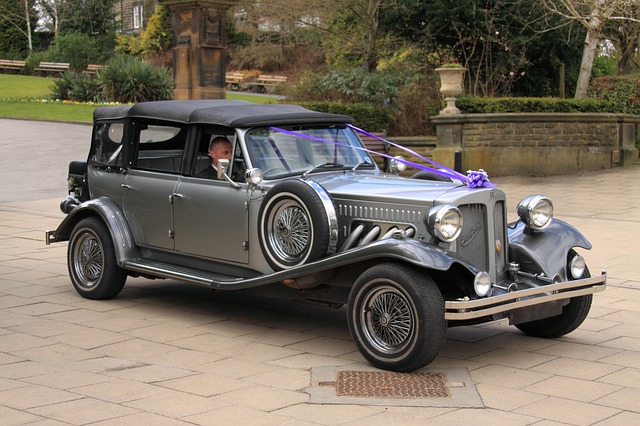
Vintage automobile restoration involves the process of disassembling the entire car, cleaning and either replacing or repairing the original parts and then reassembling the vehicle.
In order for the car to maintain its original value, it must be restored with all of the proper parts.
In most cases, the engine must be completely rebuilt.
A person who wants to restore a vintage automobile should have extensive knowledge about cars.
Mechanical knowledge is as important as doing body work to the car. In most automotive shops, body work and mechanical work are two different trades.
Someone who wants to restore vintage cars has to know both aspects of car repair.
In addition, a car restoration includes the interior of the car. It is usually more desirable to repair the upholstery, if at all possible.
Naturally, you will not be able to get a replacement seat for a 1955 Chevy, but you can recover the seats in materials that mirror those used for a 1955 Chevy.
A car that is merely replaced with lookalike parts has not been properly restored.
A vintage car can be worth quite a bit of money to a collector if it has been carefully restored to its original condition.
This usually means that you will have to do quite a bit of searching to find parts and paint for your car.
Speaking of paint, you will want to use the original paint, if possible, to repaint the car.
There are many different places where you can purchase the original car paint, or one as close as possible.
We will be discussing places to purchase parts and accessories later in this book.
You need to have patience, time, space to work and money in which to buy parts and materials.
Most important of all, you must have a love for cars.
If you love old cars and do not want to see them put to rest in the junk yard, this is your opportunity to give them a new lease on life.
Although it can be costly, the restoration can be done over a period of time to accommodate your budget.
You will need a place to work on the car and storage for the automobile when it is not in use.
There are business that practice the art of vintage car restoration.
They can generally restore a vintage auto in much less time than you will be able.
Those who collect automobiles or do not have the time or inclination to work on the projects often send their cars to such businesses.
Money can also be made by learning how to restore vintage automobiles.
Once you have successfully completed one restoration project, you may find you miss your hobby.
It is common for people who restore automobiles to continue with this hobby throughout their lifetime.
As they can only use so many cars, they often sell those they no longer want and make quite a profit.
Vintage automobile restoring is an art form unto itself.
If you plan on doing this as a weekend project, it can take years. It is, however, well worth it.
There is nothing like revving up the engine in the car that you loving restored back to life.
Make sure that you have all of the right equipment
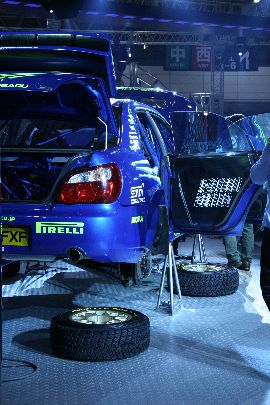
Before embarking on your project, make sure that you have all of the right equipment.
In addition to mechanical tools, such as a lug wrench set, you will also need body work equipment and protective gear and clothing for yourself.
Some of the items you should have on hand before beginning your project include the following:
· Rubber gloves
· Face mask
· Eye goggles
· Abrasive pads
· Electric drill
· Electric sander with different heads for sanding and buffing
· Glazing putty
· Car tape (masking tape is fine)
· Magnetic cloths
· Power paint sprayer
· Wax
· Primer
· Paint
Remember that it is just as important to protect yourself and your environment when you begin restoring your vintage car.
Make sure that you wear goggles and a respirator, especially when working with sanding and painting.
Before You Begin
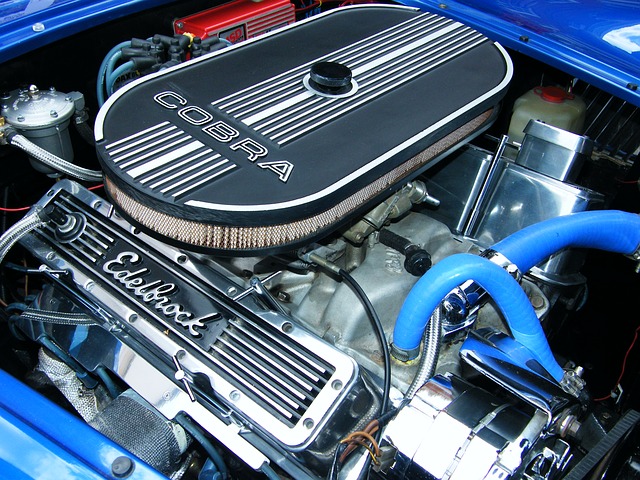
Do you know how to take a car apart and put it back together?
What about an engine?
Do you know where the interior parts of the car belong?
Do you have a good understanding about how they work?
What about the body of a car?
Do you know how to strip off the original paint of a car?
What about repainting a car?
Do you know much about how to reupholster car seats?
These are just some of what you should know if you plan on restoring your vintage car.
While it may seem daunting at first, you need to take the project into pieces.
All of the information that you need to do this job can be found either in books or on the internet.
You just have to show the desire to want to learn.
There is an old riddle that
asks “how do you eat an elephant?” The
answer is “one bite at a time"
This is the best attitude to take when looking over the automobile that you are going to restore.
Just take it one part at a time and learn as you go.
Love for cars and the ability and desire to learn are all that you need.
One thing that you will need to know is where you are planning on doing this work and where the car will be stored.
In most cases, the place is your own garage.
The restoration will most likely take place in the garage as the car will not be able to be moved about during most of the process.
If you do not have a garage and plan to work on the restoration in the driveway of your home, make sure that you check with your building code administrator to make sure this is allowed.
In some neighborhoods, cars are not allowed to be on display on blocks, which is how your car will be a good part of the time.
Things that you will need are basic mechanic tools as well as a power stripper.
As you continue with the project, you may need additional tools to work on the chassis.
As some tools, such as a power sander, can be expensive to purchase, you can often rent them from some auto stores.
It is also a good idea to network with other restoration experts so that you can not only learn tips, but also borrow tools.
Once you find out the type of car that you are planning on restoring, make sure that you find out everything about it.
There are manuals put out on every car that is made. These manuals often turn up on Ebay or other online auction sites and are sold to restorers.
You may have the car, but chances are that you do not have the manual. If you take a look online, chances are that you will be able to find what you are looking for.
You will need to know how to rebuild an engine. This is a task unto itself, but can be learned simply by going online.
If you have not taken any automotive courses in the mechanical workings of an automobile, this may be the time to do it, prior to when you begin the restoration process.
Chances are, however, if you are thinking about restoring a car on your own, that you already have extensive knowledge about cars.
What type of car are you going to restore? There is a difference between restoring an old Model T and a 1960s muscle car.
For one thing, parts are much easier to find for the later model cars than what are considered “antique” cars.
Your first project should be something a bit easier on a car that does not cost you a lot of money.
As you get better at this craft, you will be able to move on to bigger projects.
The following is a list of what you need to know before embarking on a car restoration project of your own:
How much is the car? If the car is something that has been in the family for awhile and you want to restore it out of sentimental value, this is a good way to get started.
While most of us think of vintage car restoration as being what are termed as “classic” cars that have held their value through the years, such as the 1950s Chevys, some people seek to restore vintage cars that, although not valuable, remind them of fond memories.
If you are thinking of restoring a vintage car on your own, here are some other things that you need to know before you get started:
· Is the car solid? Some cars have a rotted floor that has to be completely replaced.
In some cases, the car can fall apart if the floor is rotted through. You do not want to be spending a lot of time and money on a project that is doomed for failure.
Take the car into a shop and have it looked at by a professional. Have them tell you what is wrong with the car and what needs to be replaced before embarking on the project.
It may prove to be too costly. This is especially important if you are buying the car for restoration.
· If you decide to buy a car to restore, be wary of “deals.” Some cars are so rotted through that no restorer wants to touch them.
For your first project, do something simple, just to get a feel of the craft.
Later, as you get to know the world of vintage car restoration, you can work on bigger and better projects.
· Make a list of exactly what needs to be fixed and what has to be replaced. Take a good look at the chassis.
A car floor is very expensive to replace. Pull up the carpet and see if the floor is rotted through because of rust.
There is an old joke that “rust is the only thing holding this car together.”
Not true - rust will cause the car to completely fall apart. Small pockets of rust can be sanded and repaired, but if the whole floor is a pile of rust, the project is going to be expensive.
· Figure out where you are going to get the parts for the restoration.
Start looking around online and in the area for vintage car parts.
Thanks to the internet, you can find just about anything you need online.
· Set aside a budget to work with.
This will most likely be an ongoing project, so you may want to establish a monthly budget towards the car restoration so things do not get too out of hand.
· Most importantly - realize that your first try at restoring a vintage car may not turn out like a brand new vehicle.
Cut yourself a little bit of slack and understand that few people turn out masterpieces on their first try.
It is pretty certain that Picasso turned out something pretty bad on his first attempt at painting, too.
By having a grasp on what you are going to need to do, an approximate cost of the project and your final expectations of the project, you should be ready to begin your first vintage car restoration project!
Types Of Cars To Restore
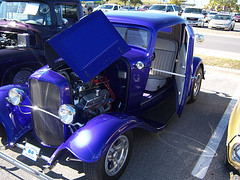
Obviously, different vintage cars have different value.
Restoring an Antique car, such as a Model T, would require a lot more effort than restoring the 1978 Gremlin that has been sitting in the garage for years.
Naturally, the Model T would be worth a lot more money.
Some of the more popular cars that are restored are those from the 1950s and 1960s.
These cars have withstood the test of time and are very popular among collectors.
Others are considered “antique” cars.
Any old car can be restored, but few people are willing to put a lot of money into a car that will not have any value after the restoration process.
The most common cars that are being restored by private individuals today include the following groups:
Muscle Cars
Muscle cars describe high performance cars with a V8 engine that were made in the United States between 1964 and 1975.
They were never referred to “muscle cars” back in their day. They were simply called “cars” or “supercars.”
They were extremely fast and often used for illegal drag racing on street. Most of the people who owned muscle cars were young men.
There are over 75 different types of Muscle Cars that were made in the United States during this era.
Just about ever car manufacturer made a muscle car. They came in mid sized, compact and what was called “pony car” versions.
Some of the most popular Muscle Cars that are coveted today include
· Pontiac GTO
· Ford Torino
· Plymouth Duster
· Ford Fairlane
· Ford Mustang
· Chevy Nova
· AMC Hornet
· Dodge Dart
· Dodge Charger
· Mercury Cyclone
This is just a brief list. Muscle cars are prized by collectors and these cars from the late 1960s and 1970s are often displayed in collector car shows across the country.
Antique Cars
Antiques are usually classified as items that are over 100 years old.
Some people will tell you that antiques can be as little as 50 years old.
The definition varies depending upon who is trying to sell you what.
Antique cars are not the same as classic cars or vintage cars.
Antique cars usually refer to those made post WWII. The Ford Model T is a classic example of an Antique car.
Very few people try to restore an antique car in their own garage.
Antique cars are collected by people who generally have a lot of money and space to store them.
They are highly coveted by the wealthy.
Antique cars usually parade in special shows. They do not run fast on the roads and have to have a special “antiques” license in order to be allowed on the road.
They are often put on display, but not used for practical purposes.
In other words, you are not going to take the old Model T down to the store to get a gallon of milk.
Cars that were part of the pre WWI era often had hand cranks to get them to start.
These have been replaced by modern transmissions and engines.
There are very few true antique cars around today and those that remain are extremely valuable.
If you are fortunate to be able to get your hands on a pre WWII car, do not let it be your first do it yourself car restoration project.
If restored properly, an antique car can sell for hundreds of thousands of dollars to a collector.
Classic Cars
We often see examples of restored classic cars when we go to outdoor auto shows in the summer.
People are eager to show off their fully restored classic cars to the general public.
Those who restore classic cars often belong to the Classic Car Club of America.
Original rules of the Classic Car Club of America was that the car had to be made between 1925 and 1948.
However, the rules are not strictly followed. When it comes to car restoration of “classic cars,” generally anything over 25 years old is considered a classic.
Depending upon the group that you join, you may or may not be able to exhibit your 1970s muscle car.
Many of the classic car clubs exhibit only the cars from the 1950s and early 1960s.
These cars, often referred to as ‘Yank Tanks” by those abroad, are roughly the size of a small boat. They are popular among collectors and, if properly restored, driveable.
According to the true Classic Car collectors, a classic car has to have the following qualities in order for it to be deemed a true classic:
· Has to be built within the time period
· Has to be high priced and a luxury automobile at the time it was built
Those who are strict classic car enthusiasts will maintain that by 1948, classic cars had virtually stopped existing.
Mass production of cars was well on its way by this time and were affordable by just about everyone.
The days of the luxury, classic cars ended shortly before the 1950s.
Vintage Cars
According to the Classic Car Club of America, Vintage Cars are those that were built before 1930 and after the end of WWI.
Cars built before WWI are considered “Veteran Cars.”
Most people today refer to “vintage cars” as an older car. Cars from the 1950s, 1960s and even the 1970s are commonly referred to as “Vintage cars.”
These are the cars that are most popular with those who seek to restore cars on their own.
The cars from the 1950s are especially popular with collectors and restoration experts and are shown in exhibitions across the country.
No matter what type of car you are planning on restoring, you should take the following tips to avoid a lot of heartache:
· Make sure that you pay less than $500 for the car. For your first job, you do not want to sink a lot of money into the project.
· Check the car out thoroughly before agreeing to the deal
· Once restored, register the car with the Antique Car Association for a special license plate if it has been made prior to 1948.
· Make sure that you have a safe and warm place to store the car when you are not working on it.
· Make sure that you have a temperature controlled place to store the car during the winter months after it has been restored.
Restoring any type of car, whether it is classic, vintage, antique, veteran, a muscle car or the old Pontiac station wagon takes basically the same type of knowledge.
As parts are more difficult and expensive to get for the truly old cars, such as a 1925 Ford, it sometimes makes better sense for the home vintage car restorer to work on those that are a lot less costly to both purchase and restore.
Interior Restoration
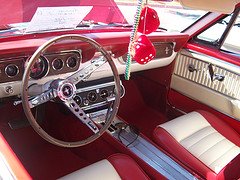
After you have looked over the car and realized everything that has to be done with it, you are best to begin with the interior of the car.
Take out the seats and pull up the carpeting on the floor, assuming that there is carpeting on the floor.
The upholstery may be salvageable. Reupholstering a car seat can take quite a bit of work and should be done correctly.
You are going to need the same type of material that was used in the original upholstery, such as vinyl, leather or fabric. In most cases, you will need vinyl.
Chances are that the padding under the seat will also need to be replaced.
Padding and vinyl can be purchased at any fabric store where you can also get tools that can be used in the reupholstering project.
If you need vinyl cords, you can purchase them online or in a store that specializes in upholstery products.
After you have removed the upholstery and padding, you should clean the seat, remove any rust and check the springs.
If the springs are rusty or rotted, they should be replaced.
Once you have taken the seat apart, cleaned the metal of any rust and replaced any springs that were bad, you can then begin to replace the padding as well as the vinyl.
There are many different methods when it comes to upholstering car seats.
This is normally done with small nails that are covered up by cording.
Unlike furniture upholstering, which uses ordinate studs, car seat upholstering is sleek, and less elaborate.
The most important aspect to remember is that you will have to make sure that the material is taut over the frame of the seat before beginning to affix it to the seat.
The seats should be set aside and the floor inspected for any rust.
Any rust can be cleared away with a sandblaster, provided that it is not too bad and has not rotted through the floor.
If the floor has been rotted through, you will need to replace it.
This involves basically taking the entire car apart and putting it back together.
In most cases, complete floor repair is not worth the effort. In the previous chapter, you read about things to look for prior to starting the hobby.
Once the floor has been cleaned, the new carpet can be installed.
This is not difficult and carpet remnants can be picked up relatively inexpensively, however, you will want to match the original carpet with the new carpet as close as possible.
Also in the interior of the car, you need to take a look at the dashboard and steering wheel.
Take a look under the dashboard and see what is working and what is not.
Chances are that many of the electronic items are shot. These will have to be cleaned and rewired.
If the parts on the dashboard have seen better days and are in dire need of replacement, you are going to have to find replacement parts for your make, model and year of car.
You can begin by perusing catalogs or looking online.
It cannot be stressed enough the importance of belonging to a club when you are starting this hobby.
Club members will be eager to help you try to find places to get parts.
Chances are that you are going to need to replace a lot of parts on the car, if you want to do a proper job.
You are best to have as many options open to you when it comes to finding part replacement.
Take the dashboard apart and clean everything thoroughly. In some cases, the plastic covering the dashboard may be cracked.
Depending on the age of the car, this may be glass. This is relatively simple to fix.
Plastic and glass can be cut to measure for the dashboard at a glass company or a hardware store.
Make sure that you replace the cover of the dashboard with what was used in the original car.
All instruments on the dashboard should be cleaned and any rust removed.
If an instrument is beyond repair, you have no choice but to find a replacement part.
Remember, in order for your restoration to be authentic, you need to use the same parts that were used in the original car.
If you cannot get the exact same part, you can use a similar model from the same time period.
Make sure you also check out the carpeting in the trunk and the interior of the glove compartment.
The entire interior of the car should be spotlessly clean, as if it came out of the showroom.
The interior of the restoration is just as important as the exterior so complete this task with care and efficiency.
If you are working on this project during the evenings or on the weekends, this may take a month to get it right.
Do not lose patience and make sure that you take your time in making the interior sparkle.
Do not put the seats back into the car until you are close to completing the restoration project.
Cover them with plastic and put them in a safe place.
Quick Tip:
Upholstery is not an easy craft to just “take up.” If the upholstery on the car is in halfway decent condition and is not ripped, try cleaning it with an upholstery cleaning solution. There are even companies that provide this service.
It is still a good idea, however, to remove the covering and inspect the padding and springs of the seat, especially if the car is over 25 years old.
It will be easier, however, to recover the seat with the older upholstery and more authentic, than to buy new fabric or vinyl and start from scratch.
Body Restoration
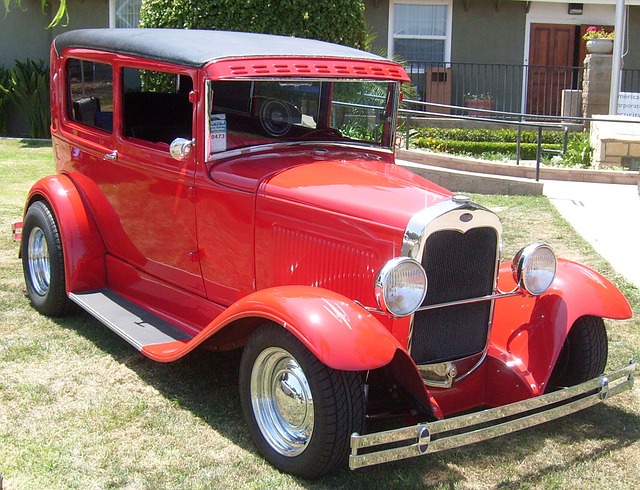
Chances are that the body of the car is not in the best of shape.
The frame of the car, however, is the first thing that people are going to notice.
You want to make sure that the car is restored as close to the original condition as possible.
The frame of the car is made of metal. You will need to take it apart, one piece at a time, and remove any rust.
Chances are that you are going to have to strip the paint and repaint the parts.
Take this one step at a time. You can remove the hood of the car, the roof, the trunk and the doors to make it easier.
Cover the interior with plastic. Clean everything thoroughly and remove all rust from the interior as well as the exterior.
It is very important, at this step, to inspect the frame of the car to make sure that it is straight.
If the frame is damaged, it is more cost efficient to replace the part that is damaged than to try to straighten it out, unless you have a body shop.
Much of what you decide to replace or repair will depend on your skills and equipment at your disposal.
If you are replacing certain panels of the car, this will require welding it back onto the frame.
Sandblasting is the easiest way to remove the exterior paint as well as rust.
Sandblasting equipment can be costly, but can be rented at certain outlets.
Sandblasting will strip the paint of the car to the bare metal and then you can start from scratch.
Once you have the car completely sandblasted, it must be buffed and smoothed.
Again, you will be inspecting for dents as they will be very apparent when the car is repainted.
The buffing and smoothing of the car is time consuming, but is necessary for the body of the car to look like it just came off the showroom floor.
The process is not one that is done overnight, but can be accomplished in a weekend.
When all of the metal painted parts of the car have been removed of rust, paint and any dents or “dings,” and the surface has been buffed smooth, it is time to spray primer on the car.
Painting a car requires a power sprayer that is used for automobiles. In most cases, this is done in a special warehouse as the fumes are toxic.
If you plan to do this in your garage, make sure that you have plenty of ventilation and wear a mask to prevent breathing in the toxic fumes from the paint as well as the primer.
Auto paint is often called enamel. It is a highly concentrated oil based paint.
This is what gives the car the shine. A primer must be used before the car can be painted so that the paint will adhere to the metal.
Spraying is necessary to give an even coat. You will want to use a high pressure paint sprayer to complete this job so that it does not have the amateur look to it.
You have probably noticed some cars on the street that look as if they have had a paint job done in their garage. You want to avoid this look.
The paint should be as close to the original color of the car as you can get.
Paint colors change each year and chances are, the paint that once graced your car is no longer made.
You can easily find out what brand and color was used by going online or referring the manual.
Once you have discovered this, call the manufacturer of the paint and see if they still have it.
Chances are that they will not, but will be able to recommend a close matching color.
There are places online that can match the color of paint for your car to that of the original color.
Save a paint chip and shop around. There are only three primary colors in paint and two pigments.
The original paint used on your car consists of a mixture of these materials.
Quick Tip:
Use the same brand paint (such as PPG or DuPont) that was originally used on the car. Not all paints are equal and you want to get either an exact match or as close to an exact match as possible.
Of course, prior to painting your car parts, you will want to remove tires, cover the interior as well as the trunk and under the hood and make sure that each part is in good condition.
The doors should be working well and the interior of the doors should be cleaned.
The windows should roll up and down with ease. When painting the panels, you want to make sure that you paint only the panels and not other parts of the car.
After priming and painting, you will also have to use a sealer.
The technique of painting a car is one that takes quite some time and requires several coats of paint.
In between coats, the panels are buffed. This is what gives the car the ultimate shine.
Once the sealer is has been put on the car, let the vehicle sit and dry for at least 72 hours.
Working on the exterior of the car is the most time consuming of the entire vintage car restoration project.
It is also the most rewarding. In order to make sure that you do things properly, use the best equipment that you can find.
Do not try to “cut corners,” especially when working on the exterior.
Car restoration is an exciting art, but should be done correctly or else all of your efforts will be a waste of time.
Mechanical Restoration
Unless you want to put the car back together and tow it around, you are going to want to get it to be able to run.
If you know something about how a car works, you will be able to accomplish this relatively simply.
If you have no idea about the mechanics of a car, now is a really good time to learn.
Begin by taking apart the engine parts and cleaning them. All of the mechanical parts and wires that are under the hood, or, in the case of a Volkswagen Beetle, in the trunk, must be taken out and cleaned.
The engine has to be rebuilt. All of the components that make the engine run, such as the starter, alternator, radiator, carburetor and distributor, should be rebuilt to the way they were when the car originally left the factory.
You want to use the same parts that were used to make the engine.
This means you will have to do a lot of digging for the exact parts for the make and model of your car.
All of the parts that you use should be new and in working order.
It will probably take some time to get all of the parts and then you have to rebuild the engine.
The other mechanical parts will have to be taken apart and cleaned.
Some parts may be easy to clean and repair and have a longer lasting life.
Make sure that you check the belts, gears, any worn bearings, oil pump and the transmission.
All of the moving parts should be cleaned thoroughly and restored to the specifications of the manufacturer in order to properly restore the car.
If you are an auto mechanic, this part of the restoration process will be time consuming, but not difficult.
You probably know how to take apart an engine and rebuild a transmission, if you have been certified.
If you do not have vast mechanical skills, however, this will be a very difficult, but crucial part of the project.
Mechanical car parts are not cheap and to spend money on them only to not have it work, can be frustrating and expensive.
In addition to getting the engine in good working order, you want it to look as clean as possible.
During the course of most car shows, the hood is opened and people take a look at the engine.
You not only want the engine to work, but you want it to shine as well.
Chemicals to clean the grease and oil that accumulates in the engine chassis can be toxic and give off fumes.
Make sure that you wear protective clothing, gloves and a mask when you are working on cleaning these items.
When you take the car to the first show, you want the interior of the car to sparkle as well as the exterior.
Make sure that you not only get the engine in good working order, but that it is extremely clean inside.
Some people polish the chrome parts of the rebuilt engine that are normally painted black and leave them in their natural chrome state to get them to sparkle.
Quick Tip:
Most of the older cars have a manual transmission and a gearshift instead of an automatic transmission. Be sure that you understand about working on a manual transmission when you begin your project.
Remember that working on the mechanical aspect of the job, although messy, is just as important as the body of the car.
Although you may feel that “no one sees it,” if you want to restore a vintage automobile the right way, you will take just as good care of the engine and mechanical components as you will the exterior of the car.
Car Accessories
The accessories of the car may be the last thing that you work on when restoring your vintage car.
The accessories include the chrome bumpers, mirrors, tail lights, tires and hub caps.
Like everything else, they should be restored to pristine condition.
All chrome accessories should be removed and polished to a high shine.
Chrome is not difficult to polish. You can use just about anything on the market to polish chrome.
You also need to make sure that you straighten out any dents in the bumpers.
This can be done by knocking them out from the back with a soft hammer. If the bumper is too far gone, you may want to replace it.
Remember that your goal is to get the car to look exactly as it did when it rolled off the original assembly line.
You may have to do some shopping for a chrome bumper to match the make, model and year of your car.
It will be well worth the effort, however, as this is one thing that people tend to notice about cars.
Make sure that all of the fine details on the chrome bumper measure up to factory specifications.
The polished and completed chrome bumpers can be put aside in plastic until it is time to reassemble the car.
Other accessories include rear view mirrors and side mirrors. Again, make sure that they are the right mirrors for the right car.
In most cases, the mirrors can be polished and continue in their use. If painted, they should be repainted with the same paint as the color of the car.
If they are plastic, just clean them. If the mirror glass is cracked or rusty, have it replaced.
The tail lights may be cracked or not in good working order. Rewiring the tail lights to work should be no problem, but getting the actual tail light of a 1956 Chevy may take some effort.
In some cases, the frame of the tail light can be salvaged and just the glass or plastic replaced.
This is more cost effective and easier than hunting around for a matching tail light.
The grill on the front of the car must also be taken off and cleaned.
Chances are it is made of chrome so it will be polished to a high shine just like all of the other parts.
Tires will have to be replaced. You want as close to the same make and model of the year that the car was built.
Find out what type of tires were used for your car and get them matched as close as possible.
If you still have the original hubcaps, you are sitting pretty.
Another chrome part, these can be polished up and made to really sparkle.
Resist all urges to get “new and improved” hubcaps for the tires. Remember, you are restoring the vehicle, not “pimping your ride.”
Chances are that you do not have all of the original hubcaps for the car.
Hubcaps are the most common objects that are either stolen from the car or lost when the car runs over a large pothole.
Again, find out what type of hubcaps were used for your car and look for them.
Quick Tip:
Try your best to restore your car to its original condition by using authentic parts.
If this is not possible, use parts that are
very similar and than only the most discerning eye can detect.
Electrical Components
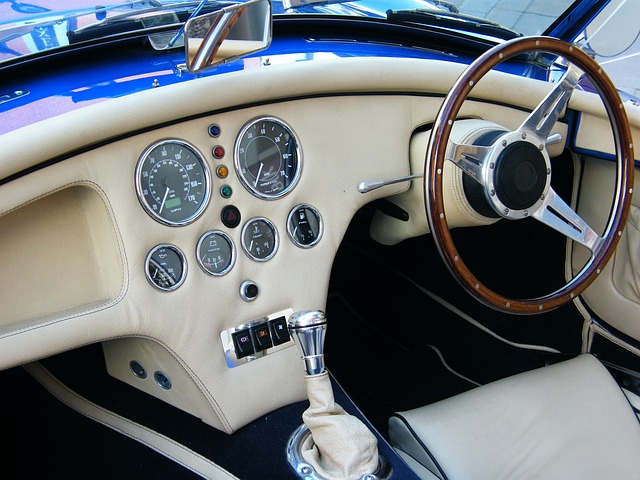
It is a pretty good bet that the radio and the clock that are on the dashboard of your car do not work.
Chances are that the clock, which is more than likely not digital, worked for about ten minutes after the car left the showroom and then promptly stopped.
For some reason, modern technology can put a man on the moon but cannot get a clock to work in the car.
Wiring the clock and radio to work takes basic electronic knowledge.
You will probably have to replace the wires for both. The radio can be taken apart and any errant parts replaced. As can the clock.
Books are available on how to make a radio and a clock and most electronic stores have components for both.
It may take some doing to get that clock back in action, but the radio should be fairly simple.
Vintage cars usually have crank up windows, push out “fly windows” and manual seats that have to be cranked forward by pulling a lever and scooting up or back.
Unlike cars today, they do not have “power” windows that operate electronically or power seats that, with the push of a button, move back or forth.
Most of the electronic equipment in the vintage cars consisted of a radio, clock (that never worked), and lights.
To get any of these things to work, you need limited knowledge about electronics.
Quick Tip:
A store like Radio Shack has everything you need to get that vintage radio working again.
The staff is also knowledgeable.
If you take the radio in, they can help you find the parts that you need.
Reassembly
Before you begin reassembling the car, make sure that everything works.
Do a test of the lights, the engine and the doors. The brake pads and rotars should be new. Then you can start to reassemble the car.
Begin by putting the interior back together such as the seats.
Make sure that everything is secure before doing anything else as you do not want to have to remove these again.
Then you can continue by putting on the doors.
After that, put on the hood, hard top and trunk. After this is completed, add the chrome as well as any exterior accessories.
Finally, when the car is completely put back together, start it up. If everything has been done correctly, it should start up with no problem.
Chances are that you will notice something that is not quite right in the car after you have reassembled it.
No one is perfect and after each job you may have regrets on “things you would have done differently.”
Realize that you are not a professional restorer and that this is your first job.
Take any mistakes in stride and vow not to make them again on your next project.
If you have gotten to this point, and your car works as well as looks good on the road, you have successfully completed your first restoration project, congratulations!
Those who have completed their first restoration are often discouraged when someone has to make a crack about something that they did wrong.
Again, take any criticism in stride and learn from any mistakes that you made.
If you followed the instructions of this book, you started on a vehicle that was inexpensive and in decent shape to begin with.
This was a first project for you, and with each restoration project, you will get better.
It is more important that you enjoyed working on the project and completing it than it being “perfect.”
While some people enjoy competing in certain shows for prizes with their perfectly restored cars, others just enjoy being able to say that they did this themselves.
Quick Tip:
Be proud of your accomplishment. You took an old car and got it to run and look good when driving on the road.
Not everyone can do that. Now that you have learned how to perform this extensive restoration work, you can continue to work to improve your craft.
Where To Get Help
During the course of your restoration project, you are bound to run into a snag or two. Or three or fifty.
This is natural, especially for your first project. This is why it is so important to network with other restoration enthusiasts.
Vintage car restoration is more than just a hobby or craft. It is a whole way of life.
There are people who are totally fanatical about it and spend most of their weekends at auto shows.
Then there are those who really enjoy doing this in the evenings or on weekends like anyone would enjoy a hobby.
Thanks to the internet, there are even more ways for those who are embarking on their first restoration project to get help.
Before beginning your project, check out the following:
1. The local library. There are dozens of books at your library on car repair and body work.
Best of all, the library is free, as long as you live in the area and did not get kicked out due to having too many overdue books.
2. Meet-Up groups. Go to a local meet-up for car enthusiasts.
This is an easy way to find others who share your interests and live in the same area.
Meet up groups can be found on the internet if you go to meetup.com. If there is not a meet up group in your neighborhood or local area, start one.
Although you can find information online, if you join a local group, you can actually borrow tools from other restorers and save money on renting or purchasing equipment.
3. Online forums. There are hundreds of websites dedicated to vehicle restoration. Join them.
You can find just about any answer to any question by looking online.
Most car enthusiasts are only too glad to share their knowledge. Introduce yourself to others and become part of the community.
4. Auto shops. Visit your local auto parts dealer and see if they have advice or help.
Chances are that they have also worked on vintage autos and can recommend products or a store.
5. Classic Car Association. Join an association where you can get help from the members.
You may have to pay a fee for this, but in exchange, you will get newsletters and information on where to get the best deals on parts as well as places to show your car.
6. Magazines. Subscribe to magazines for auto restoration enthusiasts.
In addition to learning new tips and techniques for restoring your car, you can also find ads for the ever growing parts industry.
7. Ebay. Check out the deals on used books on Ebay and Amazon for car restoration.
These can be found at a discount off of the regular price. You may also be able to find the original manual for your car online.
8. Classic Car Shows. Attend classic car shows in your area and talk to the owners of the cars.
People who attend these shows have most likely been restoring automobiles for quite some time.
They are extremely proud of their craft and eager to talk about it with anyone who wants to listen.
Be willing to listen and learn from them. You may even find a mentor.
9. Local Body Shop. If you really run into a snag while working on the body of the car, talk to the owner of your local body shop and see if he or one of his guys would be willing to help you out on the side for a bit of cash.
This applies for the mechanical aspect, too. If you are really in a bind and cannot do something, ask for help.
Chances are it will cost you less if you pay someone than if you keep attempting to do the job yourself with no luck.
10. Professional Restoration Shops. These can be found online.
Although they are in the business of doing this for a living and will scoff at any amateur who attempts to do this craft in their garage, they will be willing to lend an ear and give you some advice.
As with anything, the more knowledge and resources you have, the better off you are.
Look for resources and knowledge wherever you can and continue to learn about this craft so that you can improve your skills.
Quick Tip:
Remember that you are working on restoring an old car. You are not performing brain surgery on a family member.
While you should take a considerable amount of pride in anything that you do, keep the entire project in perspective and do not feel like a failure if you have to ask for help.
Care Of Your Restored Car
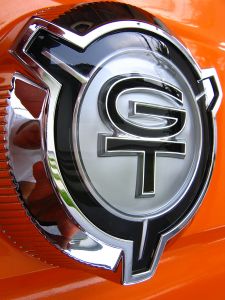
Your restored car should be kept in a heated garage and covered during the winter.
Chances are that you spent a lot of time and money working on your car and you want to make sure that it stays in good condition.
If you live in an area where it is warm and dry most of the time, like Arizona, you can take the car out throughout the year.
If you live in a climate where there is snow and ice, you will not want to take the car out during the winter months.
The salt that is put down on the road will play havoc on the body of the car you so painstakingly restored.
As is the case with any car, you should be sure to change the oil, rotate the tires and perform a tune up of the engine every year.
Start it up periodically in the winter and keep the gas tank filled.
Any car will respond to such treatment by continuing to run smoothly.
By treating your car with care, you will be able to enjoy it for years to come.
Professional Car Restoration
Professional car restoration is often used by people who collect antique or vintage cars and want them restored in pristine condition.
Professional car restoration often strives for the Concours d’Elegance as this is the highest level of restoration.
Cars who meet this degree of restoration look better than when they left the showroom.
Although it is difficult for an amateur to achieve Concours d’Elegance when it comes to car restoration, it is not impossible.
Much will depend, however, on how much money you are willing to sink into the project.
If you are a collector, you will most likely send the car to a professional restorer to have it brought up to the highest standards possible.
This often costs tens of thousands of dollars.
Professional car restoration employs state of the art technology and equipment to literally take a car apart and put it back together again.
An amateur can learn much from manuals and course offered on professional car restoration.
Remember to keep the project in perspective. This is a car that you are working on - not a matter of life or death.
If you have the time and the desire to do the job right, you achieve perfection.
Most people who have been restoring cars for a while and selling them for profit consider themselves “professional car restorers.”
Technically, this is so. They are making a profit from their craft; that earns them the title of doing it “professionally.”
These people can be excellent mentors to those who are just starting out.
There are a number of websites on the internet featuring professional car restoration services.
Most of them repeat the same mantra that it is “impossible” for amateurs to do a good job and that to achieve quality, you have to…take your car to them.
This copy is added to these websites to make it seem as though a guy in his garage has absolutely no chance of restoring his car and is just wasting his time and money. It is a marketing ploy, nothing more.
If you follow the tips outlined in this book, you will be able to restore your car.
You need to have patience and the desire to learn - nothing more, nothing less. Besides, of course, the money for parts.
Quick Tip:
Ignore the anti-amateur dialog on the professional car restoration sites and do not let it dissuade you from learning this craft. What one man can do, so can another.
The Car Is Yours!
No matter how you got there, the car of your dreams now belongs to you.
You have lovingly restored it to as close to its original condition as possible.
You should be proud to show it off to others and take it for a spin on the street.
Continue to Research
Do not allow others to stop you from what you want to do with your car restoration project.
Although the standards of car restoration call for trying to restore the car to the original condition, if you want to do something unique, feel fee. The car is yours.
When your car is finished, look on it with pride, even if it did not come out “perfect.”
Very few of us get to “perfect” if ever, but especially on our first try. It is more important that you enjoyed the experience of restoring the car.
If you decide that you want to restore another car, then take a look in the papers and auto news to find one that is in decent enough condition to restore in your garage, but cheap enough to buy.
Remember to use whatever expertise you have when buying a car for restoration.
If, for example, you are an auto mechanic, you should buy something that looks decent on the outside but does not run.
If body work is more your thing, than you should look for a car that is a mess on the outside, but still gets around.
Also, it is very important to befriend others when you are working on this hobby.
Although you may enjoy your time to yourself when working on your car, you will still need the knowledge and support of other people during the course of your restoration.
Restoring your classic car can lead to a whole new world.
It can give you an excellent hobby that you will enjoy for years to come, open up doors for new friendships and even earn you prizes and money.
Bear in mind that restoring your vintage car should be done for enjoyment, not for money.
If you go into this craft out of the love of cars, restoring your car will be and enjoyable and rewarding.
Best of all, you will have new confidence as you continue to practice the art of vintage car restoration.
More Resources for how to do classic car restoration
You can also find videos and more tips on restoring your old car by checking out some places online.
Just about everything you need is at your fingertips if you have access to the internet.
Here I will be adding some products you can buy online that I think look very useful: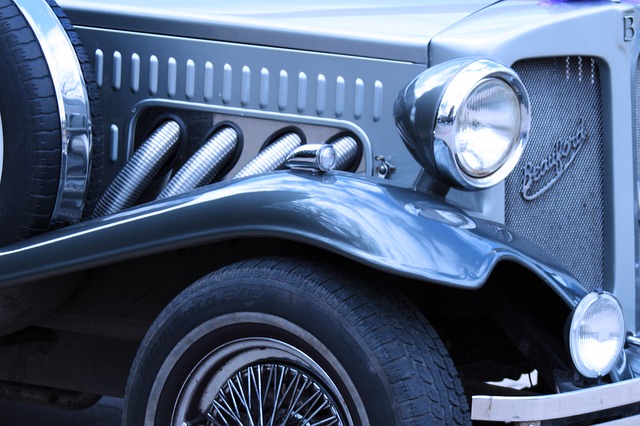
Below here I'm featuring more pages with helpful how-to-do-it tips on how to do classic car restoration.
Feel free to submit your own story or article about it, and I will create your own page here with your contribution for the community to read.
More Tips for How To: Auto & Transportation
Do you have a tip you want to contribute here? Share it!
Read the latest updates & rest of the how-to tips here:
Click the Title links below to see the latest how to do it tips and contributions to this page...
My husband used to love vintage cars
Hi There! My name is Renee. I am writing to thank you for your great resources about Vintage Cars and Restoration . My husband used to love vintage …
Top Websites For Car Junkies
When you are on the internet, make sure that you check out the following websites for classic car fans everywhere.
At these sites you can get more …
Twenty Quick Tips For Car Junkies
By now, you are probably all hyped up to restore your car. Before you get started, make sure that you read the following “quick tips” to make sure that …
Where To Get Parts for Your Classic Car Restoration
There are many different ways to get the parts that you need to restore your car.
One of the best places to go is on the internet.
You can do …
Car Shows for Restored Cars
If you join the Classic Car Association, you will be entitled to newsletters that will give you an opportunity to find out where the auto shows in your …

"Power Tips" magazine is back!
You Get A Free Complete Self Help Report delivered to your email box every edition, plus you get a free PLR article and other great gifts!
SUBSCRIBE BELOW ... I promise you will want to USE what you learn!
I really want to know what you think of this site, this page, and to hear your tips or suggestions about it.
So please share your story or simply add a Comment in the comment box.
If you feel that the information on this page has been useful to you please give it a Like or share it with your friends - thanks!!
"You are a life Saver!!
I recently discovered this site and I can tell you that my life has not been the same. I now come here EVERYDAY and spend at least 1 hour.
I used to spend that time browsing online fashion and beauty
magazine which just means that I spend more. Now I have replaced that
habit with coming here.
In future I will think about contributing articles as well. Thank you! Thank you!! Thank you!!! and God bless"
Contact Us | About Us | Terms of Use | Privacy Policy | FAQ | Testimonials
Amazon and the Amazon logo are trademarks of Amazon.com, Inc. or its affiliates. As an Amazon Associate I earn from qualifying purchases. Product prices and availability are accurate as of the date/time
indicated and are subject to change. Any price and availability
information displayed on [relevant Amazon Site(s), as applicable] at the
time of purchase will apply to the purchase of this product.
Back to HOME PAGE of this how to do classic car restoration section of the site.




































































































































New! Comments
Have your say about what you just read! Leave me a comment in the box below.